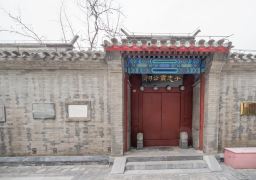Wu Song’s Tomb is located by the Xiling Bridge on the West Beishan Road, approximately 50 meters west of Su Xiaoxiao’s Tomb, facing the picturesque West Lake. The tomb stands at a height of 2.8 meters, with a circumference of 1.1 meters and a diameter of 4 meters. The pathway leading to it is 6 meters wide and spans 10 meters in length. The tombstone, made of Fujian bluestone, towers at a height of 3 meters. Engraved on the stone pillars on both sides of the memorial arch are a pair of couplets, ‘In adversity, a companion of the brave; in prosperity, a paragon of heroes,’ written by the author Feng Jicai. Originally constructed in 1924, the tomb was razed in 1964, and the current tomb is reconstructed based on old photographs, adhering to the original design. The legend of the wanderer Wu Song is documented in the ‘Thirty-Six Songs of Song Jiang’ by Zhou Mi during the Song and Yuan dynasties and in Shi Nai’an’s ‘Water Margin’ from the late Yuan to early Ming dynasty, which states that Wu Song took monastic vows in Hangzhou and was buried there. In reality, ‘Water Margin’ is a fictional literary work, and these historical sites lack historical evidence, serving, in a sense, as an expression of people’s emotional attachment.
Wu Song’s Tomb
Wu Song’s Tomb is located by the Xiling Bridge on the West Beishan Road, approximately 50 mete[...]









